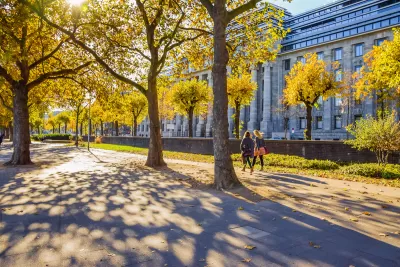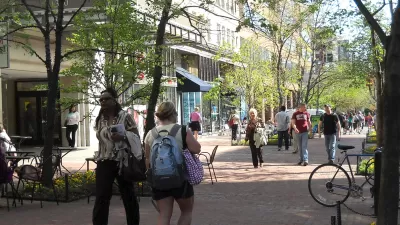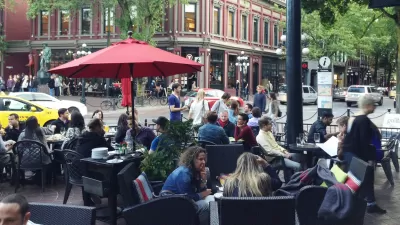With more and more people living in cities, designing equitably healthy urban spaces becomes a key question for policymakers.

“Not all urban areas are created equal, and this can have a big impact on a person’s health. Air quality, heat, food—these are just some of the ways your environment can influence health. Often, it is the poorest areas of a city that have the most negative impact,” writes Rob Reddick in Wired.
Reddick argues that understanding these disparities is increasingly urgent as the world’s urban population is projected to double by 2050. In an interview with Wired, researcher Tolullah Oni describes her research into cities and public health, saying, “I realized we needed to understand the epidemiology of the urban context as the main propagator of diseases.”
As Oni explains, urban planning and design affects everything from air quality to temperature to risk of injury on roadways. For Oni, “Often with developers of public spaces it’s a sin of omission rather than of commission.” In many cases, “What is rarely apparent is what the health cost is, because that cost is born in a different sector and often at a different time.”
Because of the structural scale of the problems, Oni says, “governments have the mandate to ensure health for all. They can’t really absolve any responsibility from that.” Even when development is largely left up to the private sector, “government is responsible also in the legislation holding the private sector accountable.”
FULL STORY: Where You Live Is As Important As What You Eat

Alabama: Trump Terminates Settlements for Black Communities Harmed By Raw Sewage
Trump deemed the landmark civil rights agreement “illegal DEI and environmental justice policy.”

Planetizen Federal Action Tracker
A weekly monitor of how Trump’s orders and actions are impacting planners and planning in America.

Why Should We Subsidize Public Transportation?
Many public transit agencies face financial stress due to rising costs, declining fare revenue, and declining subsidies. Transit advocates must provide a strong business case for increasing public transit funding.

Understanding Road Diets
An explainer from Momentum highlights the advantages of reducing vehicle lanes in favor of more bike, transit, and pedestrian infrastructure.

New California Law Regulates Warehouse Pollution
A new law tightens building and emissions regulations for large distribution warehouses to mitigate air pollution and traffic in surrounding communities.

Phoenix Announces Opening Date for Light Rail Extension
The South Central extension will connect South Phoenix to downtown and other major hubs starting on June 7.
Urban Design for Planners 1: Software Tools
This six-course series explores essential urban design concepts using open source software and equips planners with the tools they need to participate fully in the urban design process.
Planning for Universal Design
Learn the tools for implementing Universal Design in planning regulations.
Caltrans
Smith Gee Studio
Institute for Housing and Urban Development Studies (IHS)
City of Grandview
Harvard GSD Executive Education
Toledo-Lucas County Plan Commissions
Salt Lake City
NYU Wagner Graduate School of Public Service





























